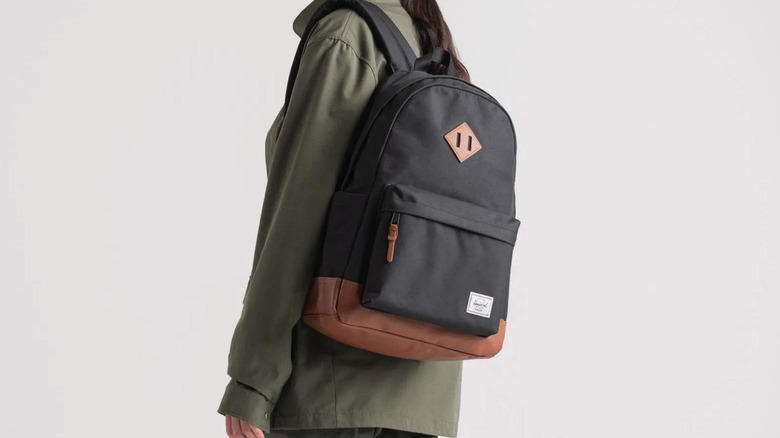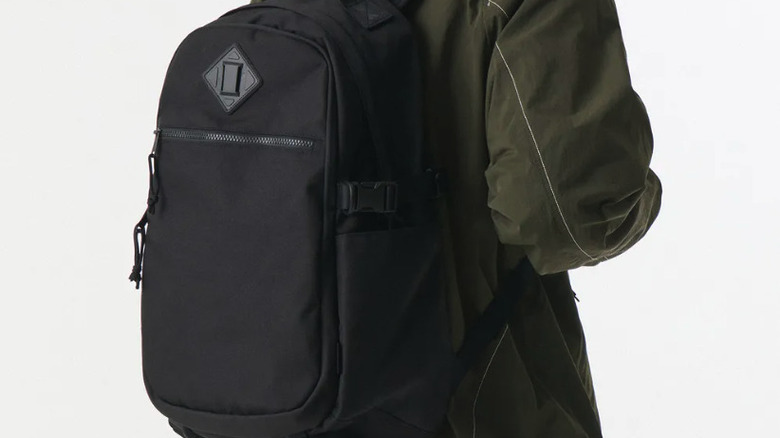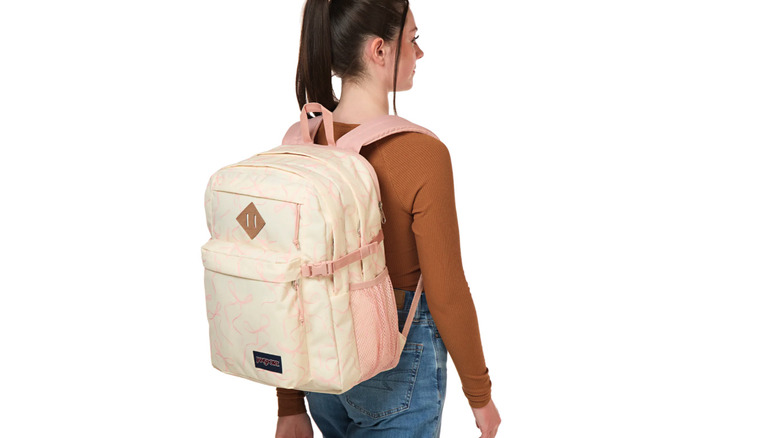Why Do Some Backpacks Have Diamond Patches? Here's What They're For
We may receive a commission on purchases made from links.
Words like "pig snout" or "lash tab" probably don't pop into your mind when you think of your favorite backpack. That is, unless you're a seasoned hiker who's explored the finer points of outdoor gear design and knows exactly how to make use of every strap, loop, and patch. For most of us casuals, though, a backpack is just a utilitarian item we grab without much thought for school, travel, or our daily commute. That's why backpacks like the Razer Rogue 16 V3, made with laptops and gaming gear in mind, have found a place in everyday life beyond the trail. While many of these backpacks have been updated for our modern lifestyles, some still retain some of their original design features, like the small, diamond-shaped patch with two vertical slits often stitched onto the front.
"Pig snout" and "lash tab" are the original names for the diamond patch you see on the front of some backpacks. As you may have guessed, the pig snout nickname comes from the patch's shape, which some say resembles a pig's nose, while "lash tab" refers to its original purpose of giving hikers a place to lash their gear to the outside of their backpack using cords and straps. These patches are usually made out of leather, suede, or rubber, and you'll find them on backpacks made by rugged outdoor brands as well as trendy urban labels.
What the diamond patch is and where it came from
Whether you call it a lash tab, pig snout, or just refer to it as "that patch thingy on the front of the backpack," it's not just for show. That diamond patch is a throwback to the days when backpacks were almost exclusively built for the backcountry. While modern-day hiking enthusiasts take all sorts of tech gadgets with them on the trail, for many, the lash tab is a useful, low-tech tool that can be surprisingly helpful when carrying extra gear.
The diamond patch design comes from mountaineering backpacks, where it served an important purpose. Climbers could thread a cord or leather straps through the two vertical slits and then attach the equipment they needed — including ice axes, climbing tools, and hiking poles — to the outside of their bag. That way, they could keep bulky and muddy gear close at hand without overstuffing the main compartment.
You're probably familiar with simple daisy chains and external loops that you can use to hang things like water bottles and umbrellas from when you're out and about. As convenient as they are, they can leave your gear swinging around loosely. The lash tab, on the other hand, is a more secure way to attach the items you want quick access to or that don't fit inside your backpack. Lash tabs were originally made of leather, but now you'll find them in a variety of fabrics, including weather-resistant materials like rubber, plastic, and suede, which are better suited for everyday use.
Why diamond patches are still on today's backpacks
Even if you don't scale cliffs in your free time, there's a good chance you own a backpack with a lash tab. Whether you're creating a custom hiking route in Apple Maps for your next big trail adventure or simply stuffing as many snacks and gadgets as you can into your everyday backpack, you may still find some use for the lash tab. It may not get as much attention as your backpack's laptop sleeve or water bottle pocket, and you'll probably never use it for carrying ice axes and ropes, but it's still a functional component for attaching gear you don't want to keep inside a backpack. Think gym shoes, water bottles, or even a tripod; with a lash tab, you'll be able to access them without opening your bag.
You've likely noticed that many brands include the lash tab on their backpacks. For example, the Herschel Heritage Backpack, which retails for $80.00 on Amazon, has a prominent lash tab on the front. You'll find a lash tab on the JanSport Main Campus Backpack, which has a list price of $55.00 on Amazon, as well. The truth is, many of today's backpack designers don't include lash tabs with climbers and mountaineers in mind; they're mostly there for style and to give the bag a classic look. However, knowing what they're used for may inspire you to put yours to work the next time you're short on space or need quick access to your gear.


